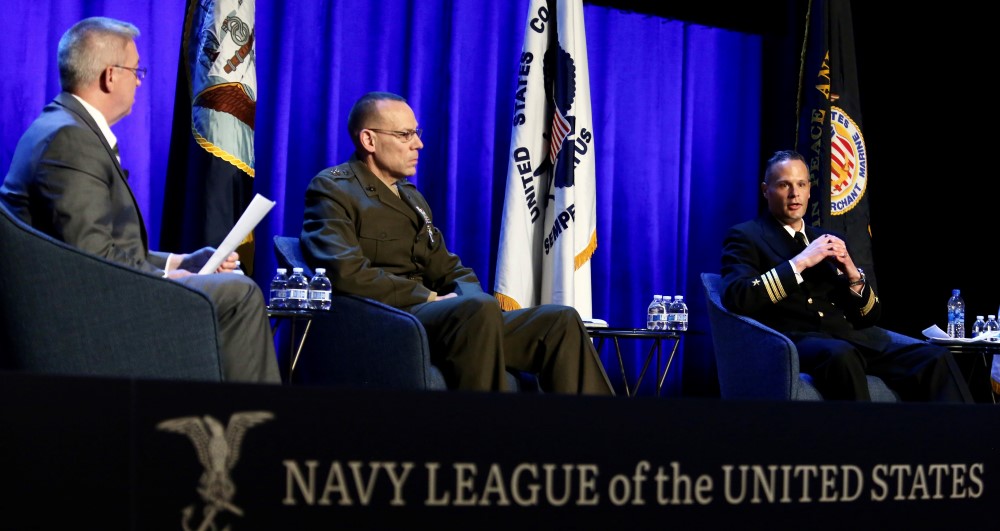
As space continues to emerge as a significantly important strategic domain, the armed services and industry alike are working together to ensure that the U.S. retains and expands its dominance.
The job at hand entails several key areas, which four experts described at length during a April 4 panel discussion at the Navy League of the United States Sea-Air-Space conference at National Harbor, Maryland.
The work performed by CAES Solutions to improve situational awareness, reduced cycle times and acceleration of technological developments, as described by Gregg Bell of the company’s Space Systems Division, would provide support for the identification and kill-chain issues Navy Cmdr. Damon Melidossian of the Defense Department’s Space Development Agency described.
“We have a partnership with Lattice Semiconductors, where will bring our radiation-hardened electronics packaging to focus, which is going to be critical for learning in space,” Bell said. “We’ll be able to further advance some of the world’s most critical missions.”
Additive manufacturing and artificial intelligence, he added, have enabled the company to deliver solutions quicker than ever before.
Melidossian said that teamwork among the combatant commands and commercial market will be critical in setting up the planned lower-orbit constellation of satellites. When in place, he said, the constellation would reduce latency issues to mere seconds.
“The architecture we’re building is done in different layers of satellites, processors and sensors, all to build out this architecture,” Melidossian said. “It constitutes initially 20 satellites. What they’re going to do is provide speed-of-light data transfer from anywhere on the planet to any warfighting element.”
Getting the satellites on orbit and on schedule is “a top priority,” Melidossian said.
Ensuring that the preponderance of quick data can be put to good use is a key challenge for the software industry, said Dr. Angel Smith of Microsoft.
“Anywhere you’ve got multidomain operations, you’ve got large data sets,” said Smith, a former Marine C-130 pilot, who manages mission solutions and customer expansion at Microsoft. “You need to move data fast, and you need to make decisions very quickly. That’s where I think the software industry is uniquely postured to be able to [provide] support.”
Maj. Gen. Ryan Heritage, commander of both the Marine Corps’ Forces Cyber Command and Forces Space Command, described how the service’s emphasis on space operations is a key contingent of the effort to divest itself of archaic missions and equipment and refocus on elements that would help with the future fight.
“The Marine Corps is changing some of the training for our space staff officers — doubling down on the space operations officers.” Heritage said.
During a recent vision to the Marine Corps Air-Ground Combat Center in Twentynine Palms, California, Heritage said he heard officers from all services brainstorm about integrating these new capabilities down to the company level.
“You typically don’t associate Marines with space necessarily,” Heritage said, “but the personnel are coming.”
New Marine occupational specialties are focusing on space and cyber, he added. In time, these Marines will rise into leadership positions.
- Panelists: Tackling Challenges, Building Trust Will Proliferate Unmanned Capabilities - April 5, 2022
- Space: The Next Warfighting Domain - April 5, 2022
- Partnerships Key to Confronting Adversaries, Harker Says - August 4, 2021




